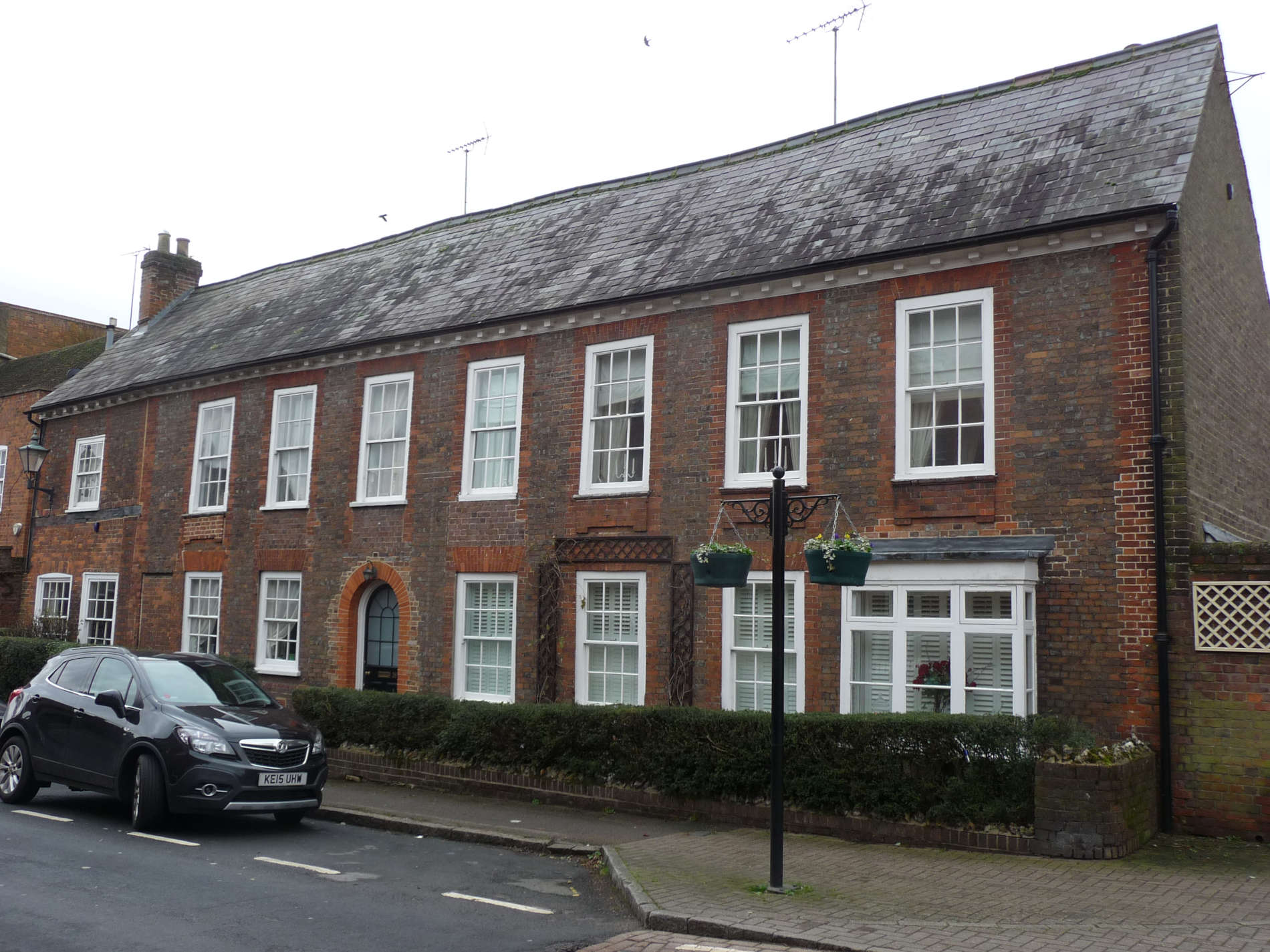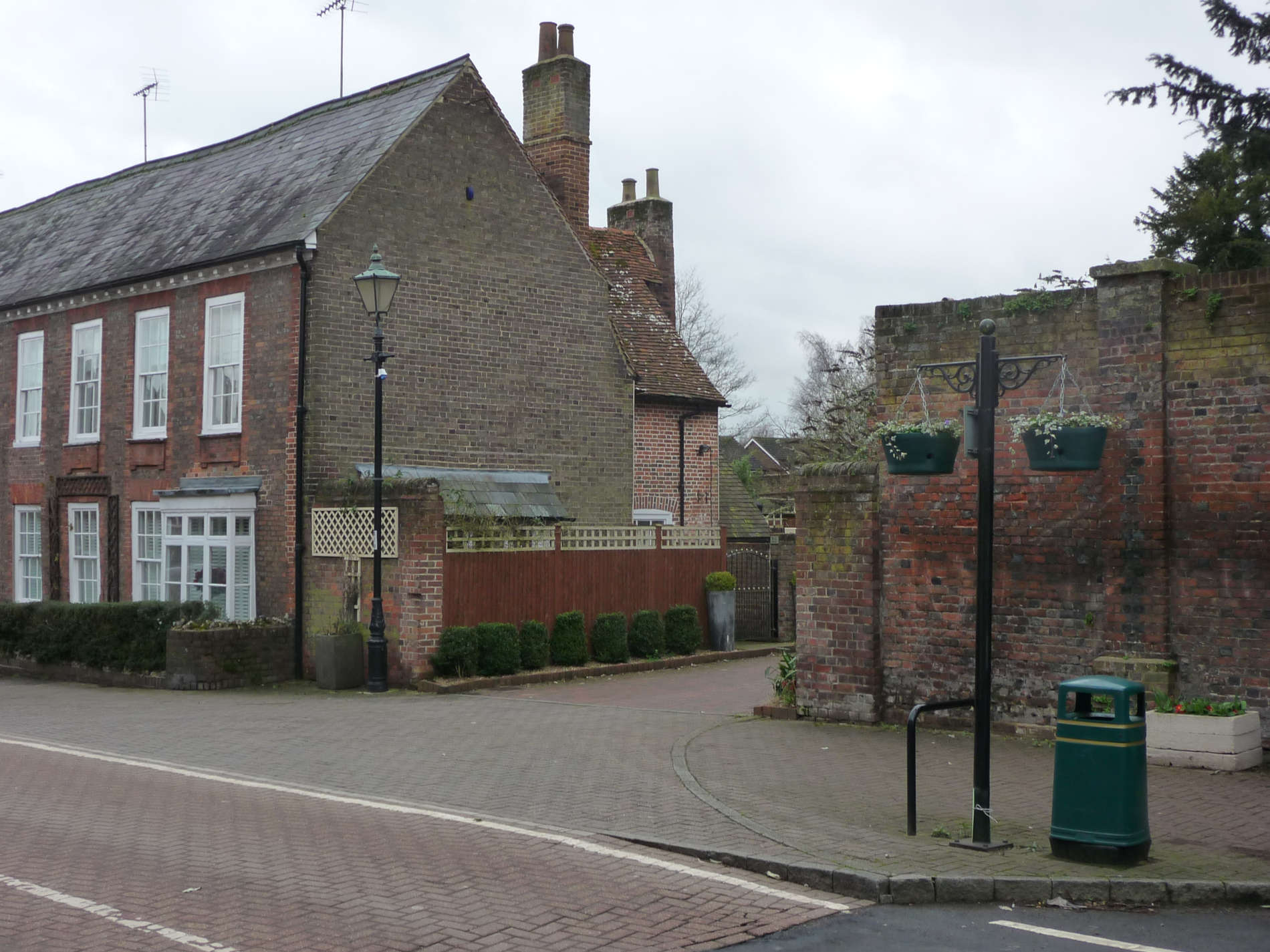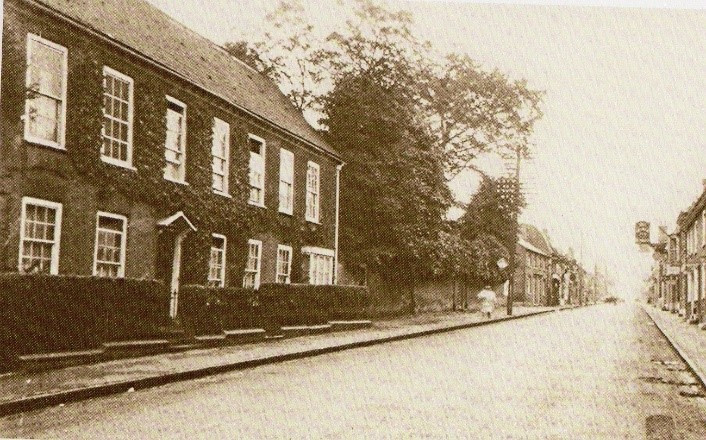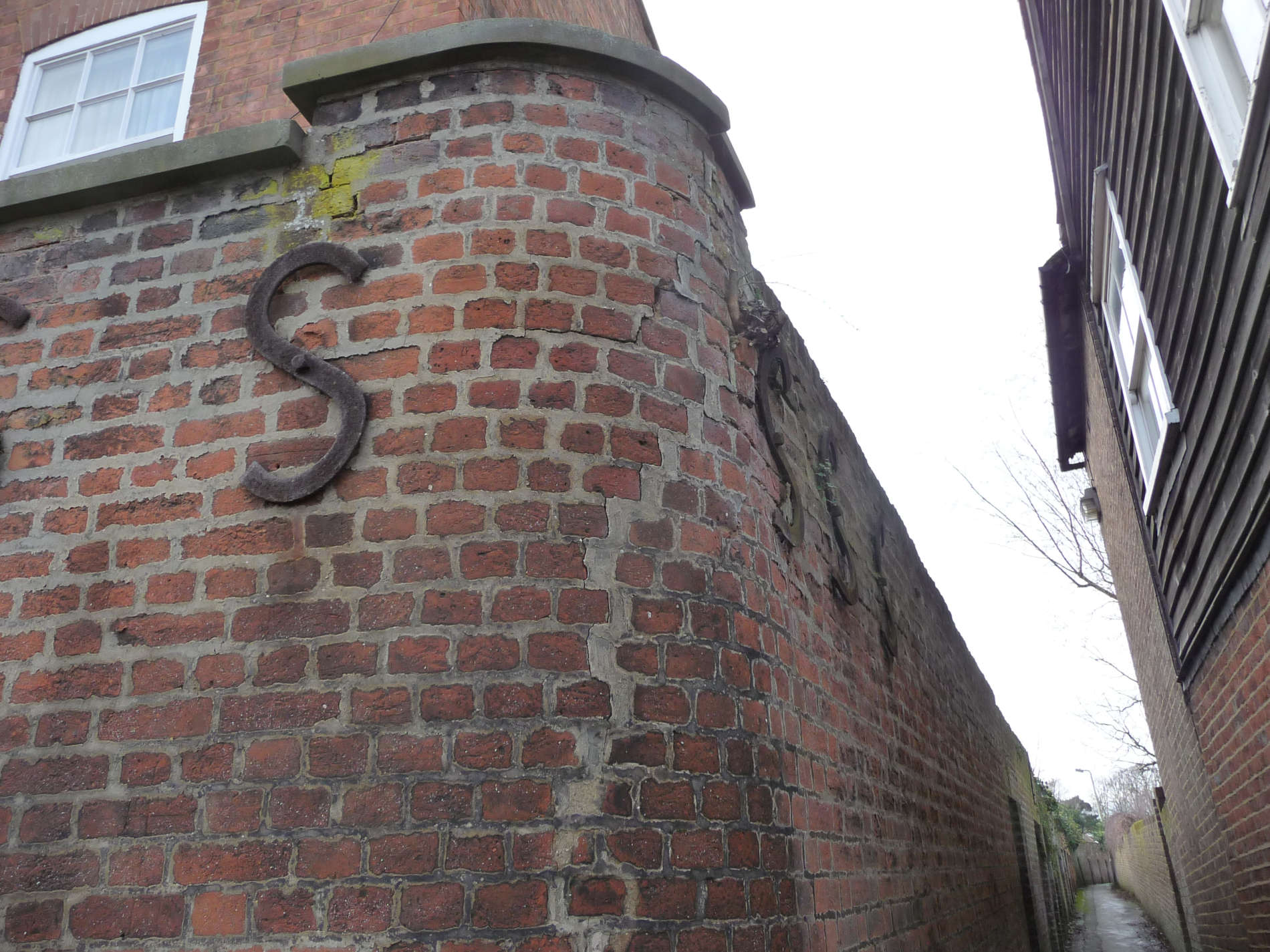High St. Nos.38, 38A & 38B


This house was built in the early 18th century with a later southern wing. Dark red bricks were used with light red bricks in a vertical banding. The lintels are also of red brick and are gauged. The roof is steep and composed of slate and the building has two storeys. There are seven flush sash windows and the four on the upper floors have brick aprons. There is a wooden eaves cornice with square modillions. The front door is set off centre and has a restored arch surround. There is some exposed timber framing which can be seen in the rear elevation and inside there are timber frames and brick partitions.

It has been suggested that the house was lived in from 1817-1828 by the Stephens family. Henry Stephens (1796 -1864) was the doctor to the poor of Redbourn with a salary of about £50 p.a. He was the son of Joseph (1771-1820) and Catherine (1763-1843) who had moved to the village in about 1800 with their family (John, Francis and Catherine) and came to the Bull Public house in the High Street. It is not known where he received his early education, but in c.1810 he was apprenticed to the surgeon John Winkfield and apothecary Benjamin Somers in Markyate. He lodged with the Winkfield family most likely in one of the two Georgian houses on the High Street. After five years learning to diagnose, dress wounds and delivering babies he enrolled at Guy’s and St Thomas teaching hospital to complete six months attending lectures and completing ward rounds before taking exams to become a qualified apothecary and surgeon. It was during this time, lodging in Thomas Street that he met John Keats, and the friendship continued when Henry returned to Redbourn with Keats visiting the Bull in 1818 (he died in 1821). While working in the village, he developed an interest in the treatment of hernias and operated on a local woman successfully in 1824. He began to correspond with Astley Cooper who had a country house at Gadebridge in Hemel Hempstead and was a well-known and successful surgeon at Guys. Although Henry felt that medical and surgical knowledge could be ‘cultivated as well in the workhouses, pauper asylums and cottages in the country as in the vicinity of the public hospitals in London’, he was persuaded to move back to London to further his work. His father had died in 1820 and is buried in the churchyard and the Bull was sold in 1826. One further link with the village can be mentioned. Henry was married in September 1829 to Hannah Woodbridge (no mention of her can be found in local records) and in December 1830 a daughter was born named Harriot. She was baptized in St Mary’s in September 1831, but died in December of that year. Her mother died in April 1832 and mother and child were buried in the village churchyard. This suggests a continuing perhaps family link with Redbourn. In his later life Henry was a MRCS and also an active member of the Council of the Medical Society of London. He spoke in meetings regularly on topics such as diseases of the joints, puerperal fever , the use of brandy as a medicine, hernias and , from the early 1830’s , cholera. Indeed in 1849, he wrote and published a treatise ‘Cholera: an analysis of its epidemic, and contagious character’. However his work was overshadowed by John Snow who made the link between the disease and contaminated water. He became increasingly interested in the poor quality of writing inks. Perhaps this is a further link to his childhood in Redbourn as in many rural areas there was perhaps a tradition of domestic ink making using traditional recipes with nuts barks and berries. With his background in experiments and knowledge of brewing and malting from the period of his family’s involvement at the Bull, he was able to set up, first in the cellars of his house and later the shed and yard where he had kept his horse and carriage, an ink making works. He obtained a patent in 1837 and his business grew. His blue-black ink was particularly successful. When he moved the family home to Grove House in Finchley, most of the manufacturing aspect of the business moved with him. This business thrived under the guidance of Henry’s son Henry Charles.
In the 1830’s the southern part of the building was the site of a school run by John Ball. It was a day and boarding school and John himself is also noted in the village for his skill in producing quill pens.
The house on the High Street was the home of a number of doctors. It is called locally ‘Doctor Totton’s’ house after Jurian Totton (1924-1962). He was a popular and well respected member of the village. The passage way beside the house is sometimes called ‘Totton Alley’ and when the garden of the house was sold off for development it was named ‘Totton Mews’. Today the house is divided in three residential properties.
The current owner of no.38 has submitted this information.
The original front door is still around the side of the building effectively off Totten Mews. The door on to the High Street was added later as access for the many doctors patients.
The back of the house dates to 1549, with the front of the building being replaced in the 1800’s. In 2019, an old priest hole was found under the dining room. The house has two floors plus two cellars. The house/cottage was previously called “The Cottage” according to its deeds and belonged to a quill makers. No.38 is said to be haunted by a resident female German spirit, Ann. Other “visiting spirits” are a maid and two former patients of Henry Stephens.
The passage way that runs at the side of the house was called ‘The Ruins’, it leads from the avenue of trees across the Common to the Church.

Amanda Nash
| #
38 High Street is not 38 A B & C. It’s 38, 38A & 38B. The origional front door is still sound the side of the building effectively off Totten Mees. The door on to the High Street was added later as access for the many doctors patients.
The back of the hosue dates to 1549, with the front of the building being replaced in the 1800s in 2019 an Old priest hole was found under the dinning room. The house has 2 floors plus 2 cellars. The house/cottage was previously called The Cottage according to it deeds and was a quill makers cottage. 38 is also haunted by 1 resident female German spirit Ann and it has spirits in visitation; a maid and 2 former patients of Henry Stephens
Reply